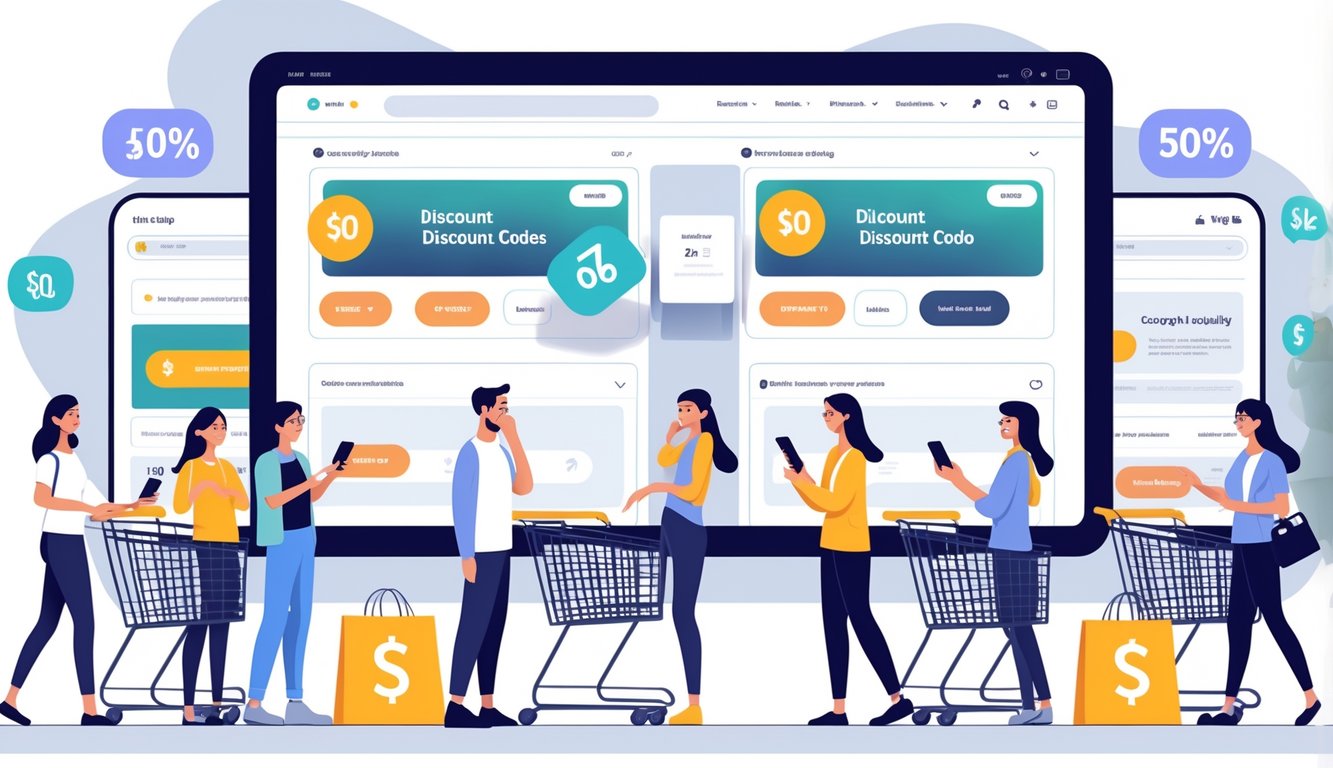
So, picture me, stuck in a checkout spiral at 1 a.m., convinced I’ve got a working code stashed somewhere, only for the site to snark back: “Not valid for denim jackets.” Or, for some reason, reusable water bottles. Seriously? Why do retailers always yank digital discounts the second my grocery bill turns into a horror show? Discount codes just poofed from major retailers, right when everyone’s online shopping habits got weird—CouponBirds says valid codes from 1,000 retailers nosedived after April 2022. That’s about when my neighbor (the one who thinks Honey can fix the economy) started texting me “secret” links that never work.
Trend-watchers (who are these people?) keep tossing out predictions: grocery stores ditch paper coupons, push QR receipts, but half the QR codes just send me to a blog post about “inspiration” or some locked-up PDF. I mean, what am I supposed to do with that? Promo code numbers are all over the place—between January and June 2024, code releases spiked 31% (Forbes, if you care), then tanked, like someone’s playing whack-a-mole with my summer wishlist. Is this progress? Regression? Or just another way for me to buy full-price coffee beans because I got distracted by a confetti pop-up?
And don’t get me started on the apps—every “cash-back” thing nags for reviews or expires deals before I even finish typing my shipping address. Not just boomers missing out, either; I’m about as online as it gets, and half my promo codes work for everyone but me. Is this a retail reset? If I have to watch a five-minute ad or solve a CAPTCHA for $2 off frozen dumplings, maybe this isn’t the “frictionless” shopping future they promised.
The Sudden Disappearance of Discount Codes: What’s Happening?

Lost all my promo codes. Classic. Jeans finally on sale, every code I saved just—gone. Retailers, big and small, seem to be flipping the script, and people like me are left refreshing tabs and questioning our entire coupon-hoarding strategy.
A Shift in Retailer Strategies
One day, promo codes just… vanished. Ghosted. Analyst Nancy Brotherson claims 30% of big apparel stores dialed back coupon codes this past year. My inbox agrees: less noise, but also, no last-minute deals.
Retailers—especially in beauty and electronics—want higher margins, so they quietly let codes expire or nuke them from the back end. Shopify folks say it happens all the time. I’ve hit “apply,” only to get a cryptic error and zero explanation. Price trackers and browser extensions? Half the time, they cough up nothing. And, fun twist, sometimes using a third-party code nukes my loyalty points or cash-back (see this report). Amazing.
“Stackable” codes? Total myth. Retailers killed overlap on essentials and sports stuff, especially when traffic spikes. I’m still salty about the sofa code that just said “expired” with no warning. Was it ever real? Who knows.
Impacts on the Shopping Experience
What really drives me up the wall isn’t just missing out on discounts—it’s the randomness. One minute I’m sure I’ll get free shipping, next minute the option’s just… gone. Why isn’t anyone talking about the mental whiplash?
Friends keep asking if there’s some secret code list or newsletter, but if you check Reddit, nobody knows what’s going on. Sellers get bombarded with “where’s my code?” messages. Even Etsy sometimes yanks codes from the updates tab, no warning, just—poof.
Maybe it helps retailers manage stock or squeeze out higher order values. For shoppers, it’s a mess—plans get derailed, checkout momentum dies, I bail on my cart rather than pay too much. My favorite coupon extension? Useless half the time because retailer APIs are a disaster. I started a spreadsheet of stores that still honor codes—out of 22, only 5 worked at checkout. Five.
Nobody really talks about how this turns online shopping into a gamble. “Convenient” e-commerce now means double-checking every step, hunting for a working deal, sometimes digging through coupon policies like some sad detective.
Changing Shopping Habits and Their Impact

I swear, one minute my phone’s pinging with fourteen promos, next minute—nothing. It’s like the apps want me to notice how checkout flows mutate every other day. I triple-check my cart totals now. Lots of people I know changed how and where they buy stuff—thanks, inflation.
Rise of E-Commerce and Mobile Device Shopping
Back in 2019, I ignored digital coupons unless they screamed at me. Now, e-commerce runs my life and my phone is basically a deals machine—battery, Wi-Fi, and discounts, in that order. My grocery list is just a mess of in-app flash sales, abandoned cart nags, and those 2 a.m. shoe ads (still haven’t bought neon Crocs, by the way).
Online shopping exploded post-pandemic. I remember reading somewhere coupon use shot up overnight—one survey said 45% of people use discount codes, which honestly sounds low based on my group chats during Prime Day. If an app can’t keep up with promo cycles, I delete it.
E-commerce brands—Zalando, Asos, whatever—tweak their algorithms so much, chaos is the only constant. Pop-ups know every brand I’ve creeped on, but somehow, nobody realizes I don’t have time to chase triple-stacked events for $3 off socks.
Adapting Consumer Behavior
Shoppers (me included) adapt faster than the algorithms. One week it’s “stack codes!” next week it’s full price and fake urgency—badges yelling “only one left!” I tap through apps at the grocery store, half the coupons vanish before I even get to the cashier. No wonder 54% of millennials say social media (Instagram, Facebook, you know) changed their shopping habits—scroll, click, ignore, repeat.
Discount codes won’t save you from inflation. People talk about “waiting for deals” or “setting alerts for mobile exclusives.” I try to clip digital coupons, but with top retailers pulling them, it’s just whiplash. The cost-conscious shift just means everyone’s hunting loyalty schemes, browser add-ons, anything for a discount.
No real answer—just a hamster wheel of new gimmicks, brands dangling codes then yanking them away. Used a weekly coupon only for the app to update and kick you off? Same.



